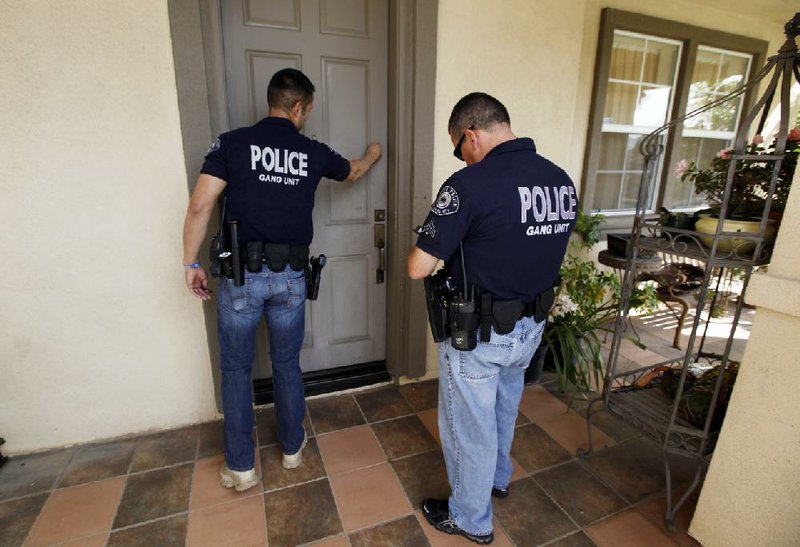LOS ANGELES - California waited Thursday for the overnight arrival of a powerful Pacific storm expected to drop widespread rain and snow on the drought-stricken state, which is desperately in need of water but also facing threats of flooding and mudflows into communities near areas scarred by wildfire.
Despite sunny blue skies behind a short-lived smaller storm, mandatory evacuation orders were issued for about 1,000 homes in two of Los Angeles’ eastern foothill suburbs beneath nearly 2,000 acres of steep mountain slopes left bare by a January fire.
For days, the cities of Glendora and Azusa have made extensive preparations, including lining streets with temporary concrete barriers. Residents also built barriers of wood and sandbags to keep flowing debris out of homes.
In Glendora, Dana Waldusky, 22, hurried to evacuate her family home, which backs up against the burned area. She, her parents and sister made sure they had important documents, photos, medicines and toothbrushes packed, but timing was tight.
“We have an hour to get evacuated,” she said. “We’re just boarding up all our doors.
“Last time at the fire we had 15 minutes, so this time we made sure we were prepared,” she said.
The home survived the fire, which firefighters stopped 15 feet from the back fence.
“This time there’s nothing you can do. You can’t stop water,” she said. “So it’s scary but, obviously, it’s in God’s hands right now.”
While concern was highest in the Glendora-Azusa area, meteorologists also posted flood watches for many other areas scorched by fires in the past two years. The National Weather Service warned of possible rainfall rates of 1 to 2 inches an hour, as well as waterspouts offshore and small tornadoes.
Even as some Californians feared the precipitation, others were hoping for more.
The state Department of Water Resources took a new survey of the Sierra Nevada snowpack and found the water content at only 24 percent of average for the date. The northern and central Sierra snowpack normally provides about a third of the water used by California’s cities and farms.
In Sacramento, meanwhile, state lawmakers overwhelmingly passed a $687 million plan to provide immediate relief to drought-stricken communities, a package that includes emergency money for communities running low on drinking water and farming communities where fallowed fields are leading to high unemployment.
The plan will take effect immediately if signed by Gov. Jerry Brown, which is expected.
In Glendora, City Manager Chris Jeffers said he understood that no one wants to leave but the city had to take an important lesson from history. The area was struck by mudslides in 1969 after a fire, and about 30 homes were lost.
“Glendora was a citrus community at 20,000 people, with orchards up there,” Jeffers said, compared to the now-urbanized city of 50,000.
“Now it’s all homes and so we have a lot more homes in harm’s way, which means more people in harm’s way,” he said.
Front Section, Pages 2 on 02/28/2014
